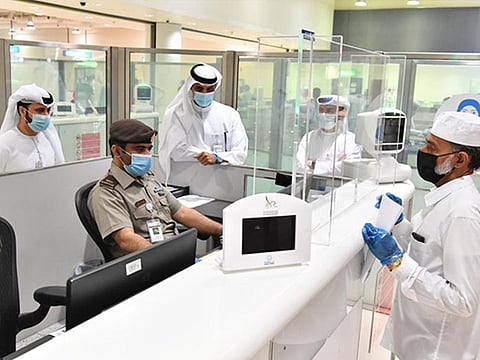WATCH: Where is the UAE visa number on my passport? Find out.
This is what the numbers mean on your UAE visa

Dubai: If you are an expatriate living in the UAE, you would have a visa stamped on your passport. But did you know that the numbers are more than just unique identifiers? Different elements of the visa page communicate specific details related to your visa status.
If you pull up the visa page on your passport, some of the details are fairly simple to follow – your passport number, your sponsor’s name or the date of issue or expiry. However, there are two entries that you may not understand very easily.
The first number on the top right is the UID number, or in some cases the Emirates ID number. The UID – or Unified ID – number is part of the Federal Authority for Identity and Citizenship’s (ICA) records. The UID was introduced along with the Emirates ID in 2010. When you cancel an old visa and apply for a new one, you would get a new visa number. However, your UID number will remain the same.
The next entry, which says ‘File’, has the most information hidden behind the numbers. A part of this file number also has your visa number.
The first three digits depend on the emirate which has issued your visa. Visas issued by Abu Dhabi would have the code 101, Dubai visas would start with 201, Sharjah with 301 and so on.
The next number, which looks like a year, is in fact the year that this visa was first issued.
The last part of this entire code is your visa number. When asked to enter your visa number, this is the number you should be providing.
Within this number, once again, there is some information hidden. If this number starts with 2, it implies that you have an employment visa, issued by a registered company in the UAE. If this number starts with 3, it implies that you are on a family visa, sponsored by your husband, wife, father or mother.
For visas issued in Abu Dhabi or Sharjah, for example, there will be an additional forward slash right after this digit to further highlight the category of the visa as employment or family.
Sign up for the Daily Briefing
Get the latest news and updates straight to your inbox









